American institute of technology case study Analysis
Question
Task:
ABC Is an American institute of technology which has recently moved to Canberra .ABC has developed
two mid-size campuses where both are located in Canberra. The distance between the two campuses
is 1.5 km. the first campus dimension is 1200 meters length and 700 meters width. The second campus
dimension is 900 meters length and 400 meters width. The first campus has four blocks (buildings) for
three colleges (IT, Physics and Chemistry) in addition to a library .The second campus has three blocks
for the administration office, business colleges and a library.
It is understood that the ABC would like to stay in use of the latest networking technology. All users
are required to be able to use wired and wireless devices .
It understood as well that both campuses will be required to be connected using any desired high
performance, less overhead and secure technology in addition to users will be able to use wireless
technology indoor and outdoor within the dimensions of each campus.
ABC would like you to develop a Network proposal (report) which can address the mentioned
requirements and concerns
Report Contents
1. Proposal description and requirements
2. Network design analysis
a. Students are required to draw the campuses floor mapping which include buildings , pin
on it where routers, switches , servers , links are located.
3. Hardware and software analysis
a. Students are required to search for devices , links and provide a list of brands, models,
technical specification and images for each.
b. List of Software may be used .
4. Relate these devices to the OSI layers , which layer are located , highlight each device
functions , each layer functions
5. The desired type of link(s) between campus .justify your choice.
6. References IEEE ( minimum 5 different resources )
- Student can use any type of drawing software to draw the campus floor mapping.
- Use your assumption to draw buildings ( blocks) dimensions.
Answer
1. Introduction
The aim of this report is to analyses ABC an “American Institute of Technology” campus network requirement. As per the American institute of technology case study, there are two mid-size campuses located in Canberra.The approach will be to meet or exceed the minimum requirement of users, providing a seamless wireless connectivity at outdoor and indoor within the dimensions of each campus.This report introduces the proposal description and requirements of the new network design. Network design analysis is also provided based on the American institute of technology case studyrequirements. Based on the analysis on American institute of technology case study, the required hardware and software for the new network design is also proposed in this report. In addition to these, the different OSI layers, devices and their functioning within different players have been also explained.
2. Proposal description and requirements
The approach will be to develop a sophisticated network design that can help the different user communities of the campuses to manage the daily operations in a much efficient way. The two campuses are separated with a distance of 1.2 km and the dimensions of the two campuses are: 1200 meters length and 700 meters width (with four blocks) and 900 meters length and 400 meters width (with three blocks). Previously, the different users were using wired or wireless network connectivity within the campuses. The network requirement includes the different wireless access points at the different locations within the range. The approach is to minimize the interference between the access points and allow the different users to be connected to the network wirelessly. As per the American institute of technology case study, a floor plan as will be developed based on the different hardware and software required for managing the different needs of the users and the University.
3. Network design analysis
Campuses Network mapping
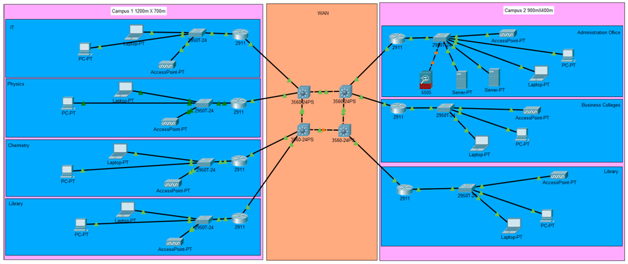
Figure 1: Network Design for the University
(Source: created by author using Cisco Packet Tracer)
The above network design based on the American institute of technology case study represents the different devices for each of the campus and their blocks in graphical form representing the devices required for network distribution. WAN network connectivity will be used for connecting the two campuses. A router at each block will be required along with a switch and wireless access points allowing the devices to be connected wirelessly or using wired connection [1]. The ends devices will be connected to the network via switch or access point. Two servers and a firewall are introduced at the administration office that will help in improving the packet sharing and the security of the network. Each block can have more than one wireless access point within the area of 1600 square feet in manner to allow all the users to be connected to the network within the campus, ‘wirelessly’.
4. Hardware and software analysis
The networking devices and components required for the introduced topology mentioned in the American institute of technology case study will include the following:
Router: Cisco ISR 4431, ISR 4000 series
- PoE GE/SFP, GE/SFP integrated WAN ports
- 4-Gbps + performance
- 900-Mbps encrypted throughput

Figure 2: Router
(Source: cisco.com)
It is the device that allows transmitting the packets to the destination through the configured path between the interconnected devices. In this particular network topology as mentioned in the American institute of technology case study, the first router acting as the bridge between the WAN and the different blocks of the campus will be dividing the internal networks into four and three sub networks respectively for the campus 1 and campus 2. This will best suit the network design being proposed considering current and future expansion in the number or users and budget.
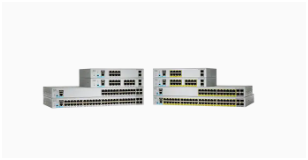
Figure 3: Switch
(Source: cisco.com)
Based on the given American institute of technology case study, this device acts as the linkage for the ethernet network allowing the message or data packet to be sent to the particular destination. It is a smart device that detects the MAC address of the different devices within the network and allows the user to send the data packets to the particular receiver [2]. Extensive use of the switches in the network helped in improving the network communication. This switch is selected for better network distribution of the particular subnet among the devices as required for maintaining the network connectivity.

Figure 4: Cat6 Cable
(Source: Amazon.com)
Considering the high speed network in the case scenario of American institute of technology case study, Cat6 cable is being proposed for the establishment of the LAN connectivity within the campus network connection. Since wireless access points will be used in the network, there will be few requirements of the cable however, it will be required for connecting the devices and transferring signals.
Wireless access points
Cisco Business 200 Series (Cisco Business 240AC Access Point)
- 4x4 MU-MIMO with four spatial streams
- 802.11ac Wave 2 standard
- Two Gigabit-Ethernet (GE) ports with PoE support
- Simplified management with Cisco Business Mobile app
- Flexible deployment with Cisco Business 100 Series Mesh Extenders
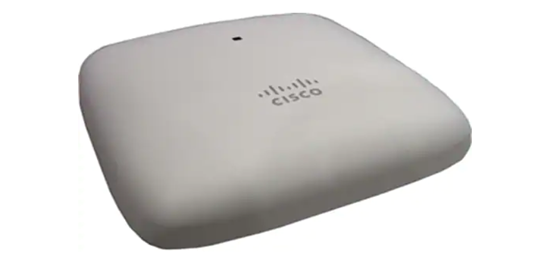
Figure 5: Wireless Access Point
(Source: cisco.com)
This device basis the case scenario of American institute of technology case study will allow wireless network distribution within a range of 1600 square feet and so, there will be a requirement of one Access point within this range and each accordingly. It will allow the devices with wireless network interface to be connected to the network and avail the services. This device is selected for the 250 users at each access point, assuming the strength of the students, staff, and other individuals that will be connected within the particular range. This should be at the center of the area range as much as possible in manner to minimize the interference and maintain the strength of the network. The American institute of technology case study signifies that a block must have two access points within three floors of the building [3]. This device is costly as that of other devices available however, quality and number of users connectivity option balances the high budget and deliveries.
Repeaters
Cisco WAP121 Wireless-N Access Point with PoE
- 802.11b/g/n Wi-Fi Network standards
- speed up to 300 Mbps wireless throughput
- 1 X FE PoE Port
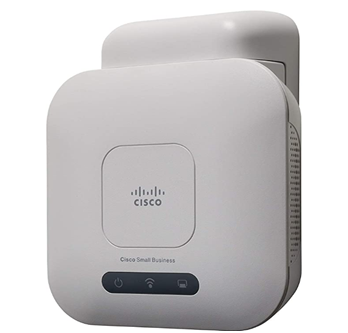
Figure 6: Repeater
(Source: Amazon.com)
As per the given American institute of technology case study, repeaters will be required if the network is in length wise distribution. Installing access points for long distances can possibly weaken the strength of the Wi-Fi and so, for boosting the network, repeaters will be required. This will help in maintaining the high strength and fast network for the different users even if they are in maximum range of the access point.
Firewall
Cisco Firepower 2100 Series
Firepower 2120
- Up to 3 Gbps
- Multiservice capable
- 12 x 1 GE fixed, 4 SFP (1 GE) ports
- 1RU
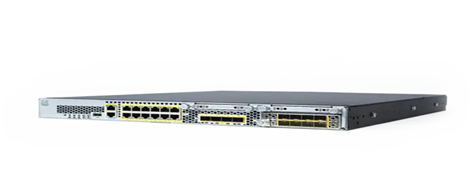
Figure 7: Firewall
(Source: Cisco.com)
For security and monitoring purposes in the American institute of technology case study, firewall is the only option for the University in order to restrict the different users from accessing the unauthorized sites or restricting an unauthorized user from accessing the network services. This device is compatible for meeting the current and future needs of the user communities and within the budget. Only one firewall can be used for establishing control over the network. Routing protocols will allow access to the network connectivity within the campus and thus, firewalls can be used for both the campuses. This best suits the current needs of the administrative office in manner to have control over the entire network.
5. Relation of the Devices to the OSI layers
For the proposed network’s OSI layer following classifications can be made in the American institute of technology case study analysis:
Physical layer:
These are the devices that are responsible for connecting the two devices in a network configuration. It includes cables, hubs, and repeaters. The cables will be used for connecting the long distant devices such as connectivity of the campus with the WAN, then connecting the router to the network, thereafter, using cables to lengthening the connectivity to the routers, switches, repeaters, and other devices
[4]. The hubs will allow the devices to be connected to the network at the particular places for the different types of user communities.
The repeaters will be needed to strengthen the wireless signal and make sure that the same speed is being distributed at the different locations using the wireless access points.
Data link Layer:
The network interface card will be required for establishing a bridge between the WAN and the campus network. This will allow the end devices to be connected to the network finding the proper network address or routing the message to the particular destination. Bridges can also be used in this scenario however, it has been outdated and so, the proposed devices can allow sophisticated network connectivity for the campus.
Network Layer:
Router those allow the data packets to be transferred from one destination to others. It allows the routers to be connected to the WAN network and thus, allowing the two campuses to be interconnected with each other [5]. Herein American institute of technology case study analysis, this can also be used for establishing the communication with the other campus network. Using proper and applicable protocols can alternatively allow the different networks to be secured, protected, or audited and thus, providing better connectivity.
Transport Layer:
Firewall is being introduced in the proposed network diagram that will be allowing the network to be more filtered and secured. This will restrict the unauthorized users from accessing the network. Moreover, it can also be used as the monitoring and auditing program that can help in managing and maintaining the different users accessibility based on their needs and requirements.
Application layer:
This includes the end user devices including PC’s, laptops, smartphones, servers, and others. This is nothing but the interface between the application and the network. It allows the users to exchange messages on the network.
6. The desired type of link(s) between campuses.
With regards to the American institute of technology case study,WAN can be used for establishing the network connection between the two campuses and then the local campus network will be connected using LAN. WAN is spread across a larger geographical area and thus, the two campuses configured using LAN at the distant locations can be used for connecting them. The WAN can be used for covering these distant locations and thus, form a global integrated network and access or share the files over the network by the campuses. Easy communication between the campuses can be established using proper protocols and network configuration [6]. There are certain issues with the security however, using firewalls can be effective and efficient in improving the network security. This can be used as the third party service and hence, a cost-effective solution for the University to establish a connection between the campus and make it reliable. The hassleness and the complexity of the network installation can be reduced to very few using it.
7. Summary
It can be concluded from the American institute of technology case study analysis that the above proposed network topology can be highly effective and efficient in establishing a reliable connectivity for the University and allowing the students to avail seamless and high speed network connectivity. The network is designed considering the needs and requirements of the different user communities including student, teachers/professors, admin, faculty, admin, and other staff. The developed network diagram clearly depicts the different blocks of the two buildings or the campuses separated distantly and the network establishment is being made using the WAN network connectivity. The devices mentioned in the above report are being presented considering, meeting or exceeding the minimum user requirements and are of low budget without compromising the quality. The devices and the different layers of the TCP/IP network have also been presented that highlights the application of the different devices in the different network layer. It can be recommended to the given American institute of technology case study for using the firewall along with the routing protocol configuration to make sure that the network being developed allows all the users to use a secured network.
8. References
[1] X. Li and T. Jiang, "Design and implementation of the campus network monitoring system,"American institute of technology case study2014 IEEE Workshop on Electronics, Computer and Applications, Ottawa, ON, 2014, pp. 117-119, doi: 10.1109/IWECA.2014.6845571.
[2] J. Ding, S. Feng, L. Li and Y. Zhang, "Campus bus network design and evaluation based on the route property," in Tsinghua Science and Technology, vol. 22, no. 5, pp. 539-550, September 2017, doi: 10.23919/TST.2017.8030543.
[3] W. Hsu, D. Dutta and A. Helmy, "Structural Analysis of User Association Patterns in University Campus Wireless LANs," in IEEE Transactions on Mobile Computing, vol. 11, no. 11, pp. 1734-1748, Nov. 2012, doi: 10.1109/TMC.2011.254.
[4] P. L. Ventre, M. M. Tajiki, S. Salsano and C. Filsfils, "SDN Architecture and Southbound APIs for IPv6 Segment Routing Enabled Wide Area Networks," in IEEE Transactions on Network and Service Management, vol. 15, no. 4, pp. 1378-1392, Dec. 2018, doi: 10.1109/TNSM.2018.2876251.
[5] G. Michael, “Design and implementation of a secure campus network,” International Journal of Pure and Applied Mathematics, 116(8):303-7, 2017, Volume 116 No. 8 2017, 303-307.
[6] S. Tongkaw, A. Tongkaw, “Multi-VlanDesign Over IPSec VPN for Campus Network” In2018 IEEE Conference on Wireless Sensors (ICWiSe), (pp. 66-71), American institute of technology case studyIEEE, 2018 Nov 21.












